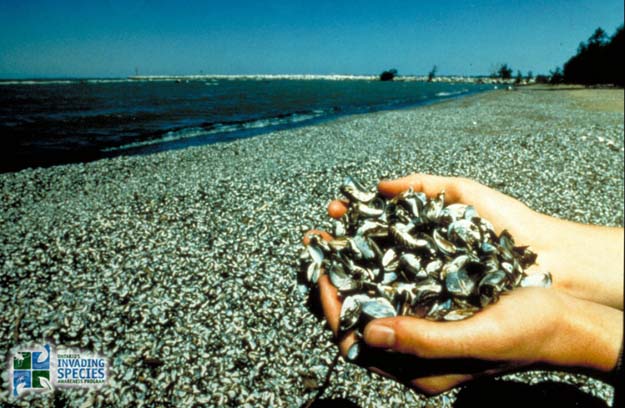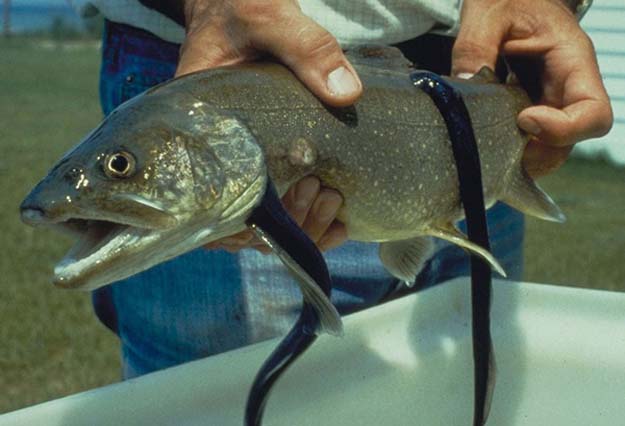[dropcap]A[/dropcap]s a reader of the New York Times and predilected to reading their book reviews (they devote a whole “magazine” to them), it dawned on me that I rarely buy from their lists or reviews. Why? They have reviewers who are no doubt frustrated or unheralded but talented writers who have been given license to speak and be heard. So, the reviews sometimes are almost a short story of the story. And, having read the story, I don’t need to buy the book.
One book review didn’t meet the “have read” criteria and got teased into a purchase: The Death and Life of the Great Lakes.
Having read the book, this fly fisher found it scarier than any of The Amityville Horror movies. The Great Lakes invasion by exotic species and the destruction of ecosystems has biblical written all over it, and it’s not a new problem – just amping up.
What we’ve done to ourselves environmentally is only now getting front page coverage, thanks, paradoxically, to the current administration’s dismissal of the usefulness of science, clean air and water and climate change.

Dan Eagan. Image multiple sources.
Following: NEW YORK TIMES book review (excerpted) by the Robert Moor . . . The Death and Life of the Great Lakes by Dan Egan.
. . . And so in retrospect, it seems odd that we gave the lake so little attention, afforded it so little care. When it began to change, radically and alarmingly, few of us even noticed. My sister was the first person I knew who remarked upon it, sometime around 2007. Having just moved back to Chicago from Mexico, she had seen Lake Michigan with fresh eyes. “Have you noticed how blue the lake is now?” she asked me one day. I had not. “It’s, like, Caribbean blue,” she said. The next time I went down to the lakeside I noticed what she meant. The lake of my childhood had always vacillated somewhere between a slate blue and the gray found in the seams of an old tennis ball. But suddenly it had taken on a kind of hyperclarity; it sparkled. The lake was so clean, I read online, that passing airplanes could see shipwrecks resting on the lake bottom. Thanks to climate change, the lake was approaching Caribbean temperatures, as well; it hit 80 degrees one recent July when it would normally be in the high 50s. I remember feeling pleased by this change, but also slightly unsettled, the same way we feel on an unseasonably warm winter’s day. It was too good to be good.

Zebra Mussels. Image credit U. S. Environmental Protection Agency, Great Lakes National Program (currently planned to be eliminated by Trump Administration).
. . . Thanks to a blind spot in the E.P.A. regulations, which allowed shipping vessels to dump bilge water teeming with tiny foreign organisms directly into the Great Lakes, in recent years a host of minor monsters has appeared on Midwestern shores: spiny water fleas, fishhook water fleas, the bloody red shrimp. But none, Egan writes, have been more destructive than the innocuous-seeming zebra and quagga mussels. The mussels managed to spread so quickly because they secrete a superglue-like adhesive that can stick to any solid surface, allowing them to cling to the hulls of speedboats, which then transport them to other lakes all across the continent. Making matters worse, the mussels suck up practically every speck of life in the water except a toxic form of blue-green algae called microcystis, which, due largely to a flood of under-regulated agricultural runoff, blossoms like an aqueous atomic bomb each summer. Egan warns that Lake Erie, which is currently experiencing the worst algal blooms of any Great Lake, and which provides the drinking water to 11 million people, could soon face “a natural and public health disaster, unlike anything this country has experienced in modern times.”
Read Moor’s entire book review . . .
NOTE: Featured Image is of sea lamprey attached to a trout. Image courtesy of U.S. Fish and Wildlife Service. The Sea Lamprey (petromyzon marinus) is an invasive species. It has no natural enemy in the Great Lakes. It was responsible for the collapse of lake trout, whitefish, and chub populations in the Great Lakes in the 1940’s and 1950’s.


